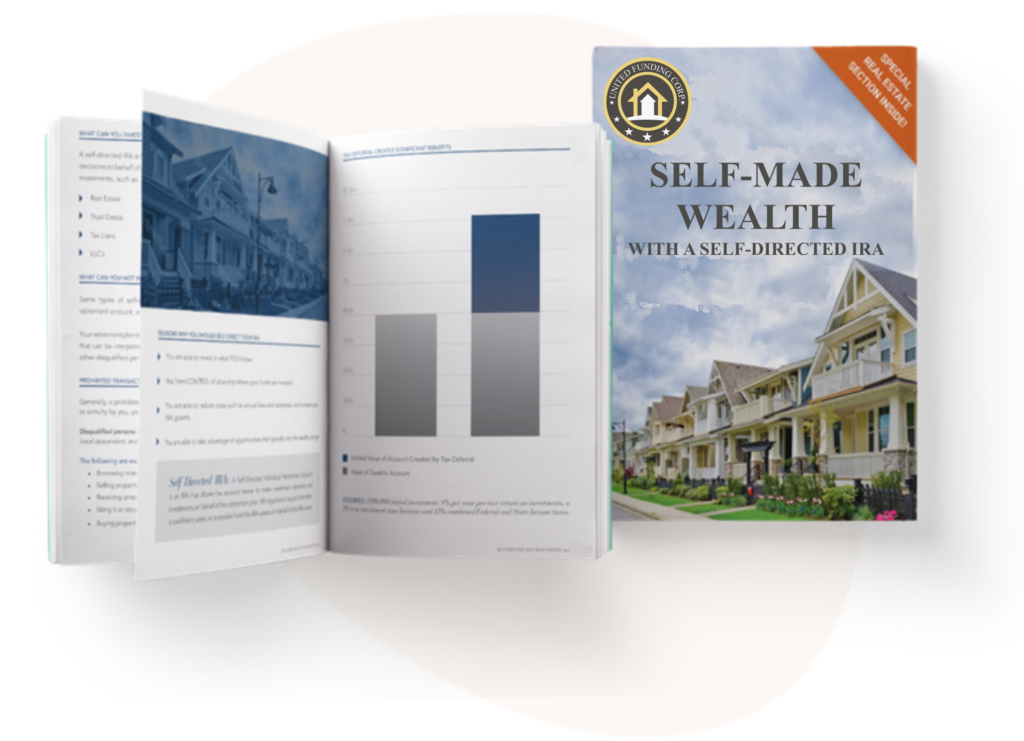
Understanding Roth Conversions: A Comprehensive Guide
A Traditional IRA or 401(k) is a reliable retirement tool, providing tax benefits in the form of deferred tax payments. However, if you are looking to maximize your retirement strategy and gain additional tax advantages, a Roth IRA might be a better fit. Particularly if you anticipate being in a higher tax bracket in the future or are planning to invest in alternative assets like real estate, switching to a Roth IRA could provide significant long-term benefits.
Luckily, the process of transferring funds from a Traditional retirement account to a Roth IRA is straightforward through a process called a Roth conversion. In this article, we will explore what a Roth conversion entails, the rules and benefits associated with it, and the potential downsides to help you determine if this move aligns with your retirement goals.
What is a Roth Conversion?
A Roth conversion involves transferring money from a pre-tax retirement account (such as a Traditional IRA, SIMPLE IRA, or 401(k)) to a Roth IRA. The key difference between a Traditional account and a Roth IRA is the way they are taxed. Traditional accounts are funded with pre-tax dollars, meaning that you don’t pay taxes when you contribute to the account, but you pay taxes when you withdraw the funds. Roth accounts, on the other hand, are funded with after-tax dollars, which means that while you pay taxes on the money when you contribute, you can withdraw funds tax-free in retirement.
When you perform a Roth conversion, the amount you transfer from the Traditional account to the Roth IRA is considered taxable income. You will need to pay income tax on the amount converted, but after that, your Roth account grows tax-free, and future withdrawals will be tax-free as well.
Your Ultimate Guide to Financial Success
Your retirement is a top priority—for you and for us. Our Ultimate Retirement Guide is designed to provide everything you need to secure your financial future. Inside, you’ll discover the key differences between various retirement accounts and explore multiple wealth-building strategies, including real estate and more. Download it today and take control of your future!

Why Should You Consider a Roth Conversion?
There are several scenarios where a Roth conversion could make sense. Here are some of the main reasons why you might want to consider converting your Traditional retirement account to a Roth IRA:
1. Avoiding Required Minimum Distributions (RMDs)
Traditional IRAs, 401(k)s, and other pre-tax retirement accounts require you to begin taking Required Minimum Distributions (RMDs) starting at age 73. These withdrawals are taxed as ordinary income, which could push you into a higher tax bracket during retirement. Furthermore, taking money out of the account each year reduces the potential growth of your retirement funds.
With a Roth IRA, however, there are no RMDs during your lifetime, allowing your funds to grow tax-free for a longer period. This could result in a significantly larger retirement balance for those who don’t need to tap into the account early.
2. Tax-Free Withdrawals During Retirement
While withdrawals from Traditional IRAs and 401(k)s are subject to income tax, Roth IRAs provide tax-free withdrawals in retirement. This can be particularly valuable if you expect to be in a higher tax bracket when you retire. Although you’ll pay taxes on the amount you convert now, you can potentially save on taxes in the future, as Roth withdrawals are exempt from tax when taken during retirement.
3. Tax Diversification
Many financial experts recommend diversifying your investment portfolio across different asset classes, but tax diversification is also crucial. By holding both Traditional and Roth accounts, you give yourself more flexibility in retirement. If your income or tax bracket fluctuates, having both types of accounts provides options for minimizing taxes and maximizing your retirement income.
4. Leaving a Larger Inheritance to Heirs
Another reason to consider a Roth conversion is if you want to pass on a larger inheritance to your heirs. If you leave a Traditional IRA to your beneficiaries, they will be required to take RMDs from the account, which could reduce the balance of the account over time. However, by converting to a Roth IRA, your heirs won’t be required to take RMDs, allowing the account to grow more efficiently for future generations.
Roth IRA Income Limits
Unlike Traditional IRAs, Roth accounts have income limits that can reduce your eligibility to contribute or prevent you from contributing at all. For example, if you are married and filing separately, you won’t be able to contribute directly to a Roth IRA if your annual income exceeds $10,000.
However, Roth conversions do not have income limits. This is beneficial for individuals whose income might prevent them from contributing to a Roth IRA directly. By converting funds from a Traditional IRA or 401(k) to a Roth IRA, you can still take advantage of the tax-free growth and withdrawals, regardless of your income.
Roth Conversion Rules to Remember
While Roth conversions can be advantageous, they come with specific rules that you should be aware of before proceeding with a conversion. Here are some important considerations:
1. Tax Considerations
One of the main implications of a Roth conversion is that you’ll owe income taxes on the amount you convert. This is particularly important because the amount you convert is considered taxable income for the year the conversion occurs. Depending on the size of your conversion and your income tax bracket, the conversion could push you into a higher tax bracket for the year, resulting in a larger-than-expected tax bill.
2. The 5-Year Rule
Each time you convert a Traditional retirement account to a Roth IRA, the IRS imposes a 5-year rule. This rule stipulates that any withdrawals made from the converted amount within five years of the conversion will be subject to a 10% early withdrawal penalty, in addition to any applicable income tax. This rule applies regardless of your age, so it’s important to keep this in mind when planning your Roth conversion.
3. Partial Conversions
If you are not ready to convert your entire Traditional IRA or 401(k) balance to a Roth IRA, you can choose to do partial conversions. This allows you to maintain some of your funds in a Traditional account while taking advantage of the Roth IRA benefits for a portion of your savings. By converting funds incrementally, you may be able to spread out the tax liability and minimize the potential tax impact in any given year.
When a Roth Conversion May Not Be Worth It
Despite the potential benefits, a Roth conversion may not be right for everyone. Here are some situations in which it may not be worth considering a Roth conversion:
1. Expecting to Be in a Lower Tax Bracket During Retirement
If you expect to be in a lower tax bracket in retirement than you are now, converting to a Roth IRA may not be the best move. Since the Roth conversion is taxable, you would end up paying taxes on the converted amount at your current, higher tax rate, only to withdraw the funds at a lower tax rate in retirement. In this case, it may be better to keep the money in a Traditional IRA, where you can defer taxes until retirement.
2. Planning to Access Funds Within Five Years
If you plan to access the funds in your Roth IRA within the next five years, it may not be worth converting. Any earnings withdrawn from a Roth IRA within the first five years of the conversion will incur a 10% penalty. You will also have to pay taxes on the converted amount, so accessing the funds early would result in a double penalty.
How to Execute a Roth Conversion
If you’ve determined that a Roth conversion is right for you, follow these simple steps to complete the process:
1. Ensure Your Account is Eligible
You can convert Traditional IRAs, SIMPLE IRAs, SEP IRAs, 401(k) accounts, and 403(b) accounts to a Roth IRA. Check with your account custodian to confirm that your account is eligible for a conversion.
2. Open a Roth IRA
If you don’t already have a Roth IRA, you will need to open one. Some financial institutions allow you to convert your Traditional account to a Roth IRA within the same institution, while others may require you to open a Roth account with a different provider.
3. Decide on How and When to Convert
Once your Roth IRA is set up, decide how much of your Traditional IRA or 401(k) you want to convert. You can opt for a full conversion or a partial conversion, depending on your needs and tax strategy. It’s generally a good idea to spread the conversion over multiple years to avoid a large tax burden in a single year.
4. Pay Your Taxes
Be sure to account for the taxes on your Roth conversion. When you file your tax return for the year in which the conversion took place, include the converted amount as taxable income. Make sure you set aside enough funds to cover the taxes owed on the conversion.
Conclusion
A Roth conversion can be a powerful tool for individuals looking to maximize their retirement savings and reduce their tax obligations in retirement. However, it’s important to carefully consider the tax implications, the timing of the conversion, and your long-term financial goals. Speak with a financial advisor to determine whether a Roth conversion makes sense for you and how to execute the strategy effectively.
